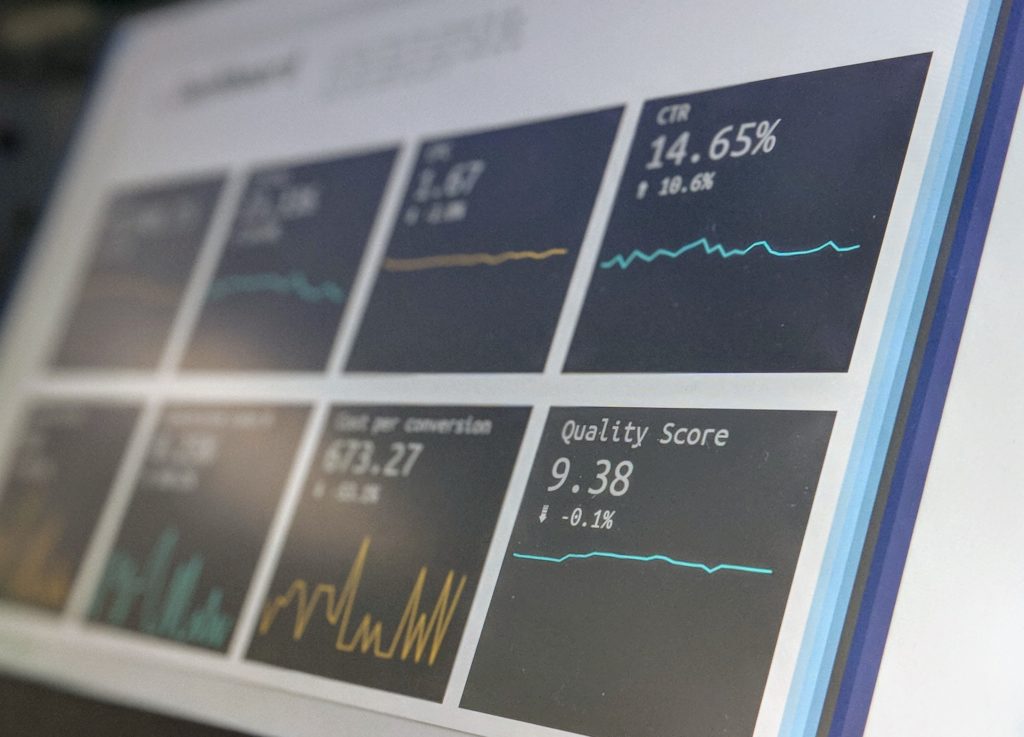Are you curious about the many ways COVID-19 has impacted the marketing industry? Now that businesses have closed the books on Q2, companies can see a complete picture of how B2B and B2C marketing has evolved since the pandemic started. We see a range of new challenges arising, but it is critical to take a look at how some common marketing challenges have continued to impact our industry.
Today we will assess some of the most common COVID marketing challenges and how to prepare to overcome these obstacles as the rest of the year unfolds. Don’t let Q4 sneak up on you without fine-tuning your strategic marketing plan. Recognizing the challenges faced this year can also help you future-proof your business and maximize your MarTech investment.
Current State of Business
In efforts to slow the spread of COVID, states began shutting down their physical economy, giving rise to an online-first focus. For companies, being visible has become a key advantage – and for many, the only way businesses could continue making sales. The customer journey rapidly changed for most industries, but those who knew their buyers best and had already built their digital “storefronts” and processes were able to adapt on a dime. Marketing teams shifted their focus to figuring out how to keep existing prospects interested while sensibly navigating an unparalleled crisis.
As people were suddenly spending the majority of their day online, businesses had a renewed opportunity to grab the attention of their potential buyers. Focusing on existing specific touchpoints no longer became useful. Marketing professionals now had more opportunities to engage with and convert potential leads. These changes have caused many shifts from both an advertising and lead lifecycle standpoint. Demand generation benchmarks skyrocketed and served as indicators of what short and long-term adjustments businesses needed to make to survive during this pandemic economy. Amidst all of these new challenges, companies had to learn to take their business entirely online, adapt to financial uncertainty, and continue to set themselves apart in an extremely competitive environment.
Over time, buyers continued to seek business interaction and support. With stay-at-home orders in place for the majority of the country, the need for user convenience grew. Although engagement and advertising metrics surpassed previous benchmarks, decreasing sales forecasts prompted businesses to reassess their sales cycle and outreach strategies. Inbound marketing took center stage in efforts to maintain and engage an existing customer base while restructuring sales tactics to attract new customers and close existing deals.
With websites becoming “storefronts” and the point of sale for various companies, online traffic spiked, and companies ready for this dramatic digital change were able to meet their customer’s immediate needs. The biggest challenge for companies was to determine their own business needs versus wants in this quickly evolving Martech landscape. At GNW Consulting, we took this opportunity to help our B2B and B2C clients dive deep into their existing data, platforms, and initiatives to determine what their business needs versus wants are. Our strong focus is using a collaborative approach to identify what’s possible and to design an actionable roadmap for immediate success.
You’ve probably noticed your email inbox flooding with more business emails. Marketing email volume has risen significantly across the board with open rates also rising above previous months. This growing trend, however, is not mirrored on the sales side. The ability of marketing teams to cut through the noise to support their clients is an ongoing opportunity for businesses everywhere pre- and post-COVID.
Marketing Benchmarks in the Age of COVID-19
According to COVID-19 marketing and sales benchmark data, global site traffic for impacted businesses increased by 16% during Q2 compared to Q1. Throughout Q2, traffic spiked above the 24% benchmark and toward the end settled in the 15-20% range. Note that several industries experiencing the hardest impact, such as travel and hospitality, received 40% more traffic during early June. Overall, it is safe to assume that buyer interest is at an all-time high as customers continue to vet their existing options.

Customers are not only visiting websites, but they’re also initiating more customer chats. While sales teams sent up to 60% more emails in Q2, their dismal customer response rates have pushed them to shift their focus to chat as their main prospecting activity. Customer service teams had to rely on chats as they moved their operations remotely to meet the increased need for support on all fronts. On average, total chat volume increased by 31% from Q1 to Q2 and continues to maintain steady growth into Q3.
Email marketing is a particular tactic that we’ll be keeping a close eye on. Total sends rose significantly by 21% since Q1 with skyrocketing open rates. This statistic is contrary to existing email marketing expectations of maintaining sends low to increase open rates. It is important to note that smaller companies who sent fewer emails still got more opens. Despite this, the world is heavily dependent on emails for communication with customers expecting high-touch interaction in their inbox. Sending effective and helpful emails is even more important, you can achieve this by implementing an effective marketing automation strategy. Doing an audit of your existing marketing automation instance or reviewing previous campaign successes can help you determine how to develop a strategy that works. GNW Consulting specializes in helping you evaluate data to create an actionable road map for your business goals and objectives.
While email prospecting is on the decline, sales teams need to work even closer with marketing to improve their falling engagement rates by engaging prospects with personalized emails. Call prospecting plummeted to an all-time low of 27% below benchmark in April but has increased to 9% below benchmark in June. This trend shows that sales teams need to overhaul their prospecting tactics by shifting the frequency and quality of their communication to better serve their customers in Q3 and Q4.
Although many companies have hit the pause button on their normal operations, we can expect to see more stability given that companies adapt successfully to growing customer demands. Companies of all sizes need to consider evaluating their lead generation benchmarks to remain competitive while making pivotal changes in their strategic plans. In a nutshell, some industries are overperforming, while others are lagging.
Businesses are Looking Ahead
Now that we’ve covered the numbers, what can you do to promote company success during this time? Each business will have to face unique marketing challenges, so be sure to design your campaigns around your existing marketing structure. At GNW Consulting we categorize campaign designs into two distinct types:
- Get-Stuff-Out-the-Door Design: This is the place to start if you haven’t started implementing a marketing automation platform of your choice or if you’re planning to migrate from an existing platform. Most businesses will fall into this category, but many aren’t exactly sure how to show instant ROI. We have the expertise to help you configure your first set of campaigns. For those with an existing instance in place, if you’re looking to set up welcome or drip nurture campaigns or attempting to tag and clean up your database, we’ve got just the tools to help you. Our goal is to show you the efficiency of marketing automation and present instant ROI.
- Strategic Campaign Design: If you’ve got an existing instance and need help fine-tuning your campaigns to perfection, we’re the ideal consultants to help you complete a thorough audit, diagnose problems and prescribe solutions to ensure your current campaign is exceeding your expectations. Our experts consider your business goals and objectives when crafting an actionable road map for your teams to run campaigns with ease.
While marketing automation can yield quick ROI, there are many other tools you can leverage to manage the uptick in buyer interest and online traffic. We highly recommend investing in a chat tool. While this can be a time-consuming investment, conversational marketing will help you keep a competitive edge while keeping customers happy. There are two different types of chats to consider. You can appoint a sales team member or customer service team to manage all inquiries through live chat, or you can create a chatbot with prompts like a phone service that can triage questions to an appropriate team member. Investing in a chat tool can help you scale your business in the long run by taking simple customer service tasks such as scheduling and FAQs off your team’s plate, allowing them to spend more time having real conversations with clients.
A shift in sales mindset should happen during this pandemic. The focus should be on the quality of your prospecting rather than the quantity. This type of evolution in thinking must occur through collaboration with marketing teams. Avoid siloing your teams and focus on delivering a quality experience to your customers regardless of where they are in their buyer journey. Focus more on research and knowing what your clients are looking for every step of the way. Calling isn’t the best approach anymore, so have your sales team focus on qualifying leads and rethinking what a “good fit” looks like, then reporting their findings to your lead and demand generation teams to ensure you’re reaching the appropriate audiences from the start. In addition to research, sales should be focusing on content personalization and adding personality through the use of video in their emails. Remember, the integral part of shifting this mindset is for your operations to support marketing and sales equally while creating a collaborative, open environment.
How to Cut Through the Noise

As companies continue to move toward a digitally centric business model, your competition will inevitably increase. Discoverability will become even more important, so invest in long play tactics such as building your SEO and brand awareness. With our help, you’ll be able to identify what your business should do based on existing marketing data from campaign analytics, opportunity creation, content engagement across various channels and deal creation. You’ll be able to tweak and revamp strategies by asking yourself the following questions:
- Who are your ideal target personas? Are you aware of what they’re looking for or the type of content that resonates with them? Completing a persona exercise can help you create hyper-targeted campaigns that will have a higher impact at a fraction of the cost
- Are you CRO? Conversion Rate Optimization is the act of determining which touchpoints bring you the most opportunities and replicating your tactics across the board to ensure you’re using your resources to the fullest
- Is your content engaging? How are your campaigns and blogs performing? Are they being found? Take a look at your landing pages, do you have a heatmap in place showing you where the most engagement is happening?
- Are you making the most of your existing assets? Do you have a good ratio of video versus written content? If you’re not creating useful videos or if they’re too long, you’re not making the most of your investments put forth toward creating content.
- Do your forms make sense? Are you asking prospects the right questions? This is often overlooked by the marketing and sales teams, but it requires a bit of collaboration. A/B testing can help you identify what information is most useful for you to collect to ensure you’re increasing your closed-won opportunities.
These are just a few of the many initiatives you should consider when adapting your marketing in the age of COVID. It is important to make educated decisions when making strategic changes, so consider working with GNW Consulting to help you create a consistent user experience across different devices and marketing channels. We’re ready to help you craft a strategy tailored to your business objectives to maximize your marketing budget and ensure a considerable increase in ROI. Remember, the most important thing to remember when overcoming obstacles during this time is to keep the safety of your customers and employees in mind.